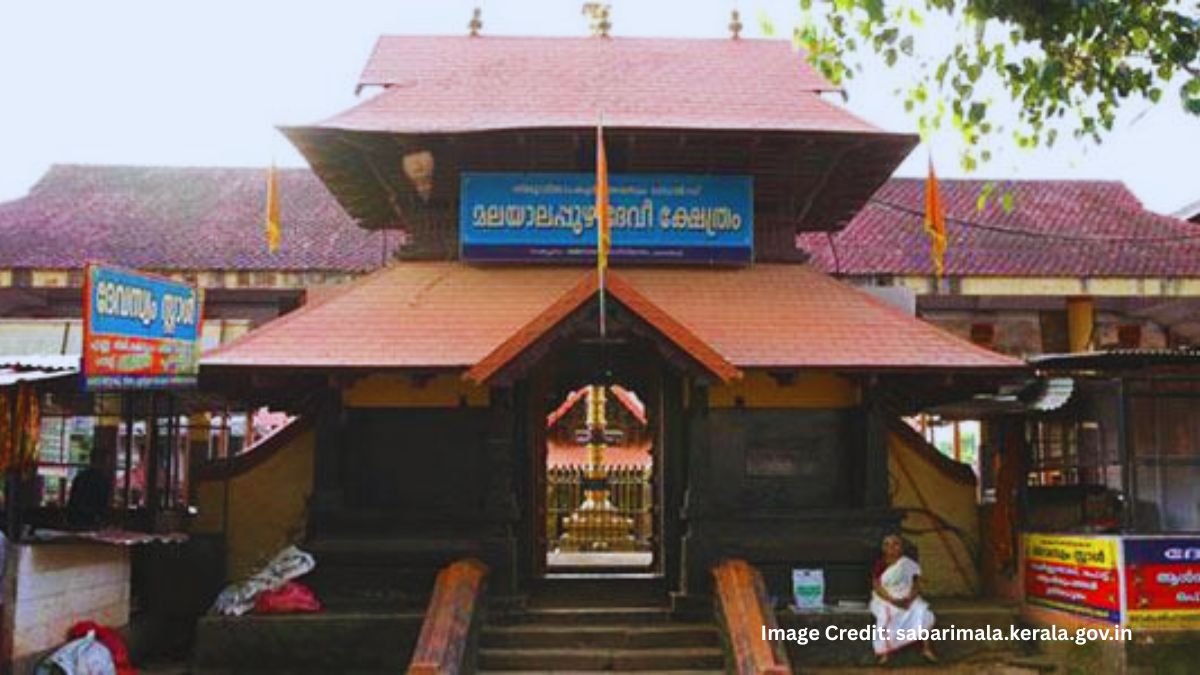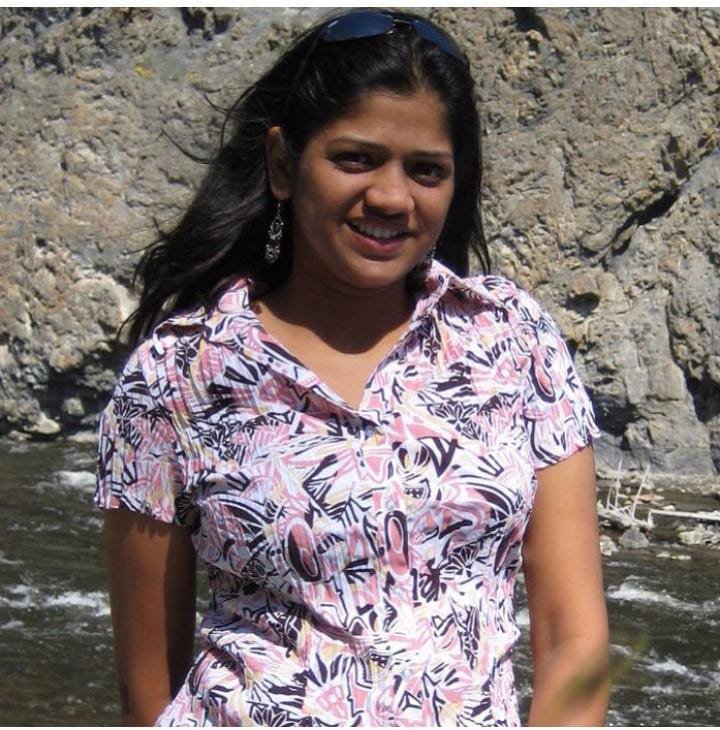There’s a certain energy that fills the air in my home state of Kerala as the year draws to a close. It’s a sound, a sight, a feeling. It’s the sound of “Swamiye Saranam Ayyappa” chanted in unison by men clad in simple black dhotis. It’s the sight of my father and brother, their faces serene with devotion, preparing for a journey that is more than just a trip—it’s a transformation. This is the energy of Sabarimala.
For as long as I can remember, the Sabarimala pilgrimage has been a sacred rhythm in my family’s life. While tradition has shaped my own path of devotion, my role has always been one of love, support, and meticulous planning for the men in my life undertaking this profound journey. I’ve spent years understanding the intricate calendar, the discipline of the vratham, and the logistics of a pilgrimage that draws millions.

5 Dark Secrets of Brihadeeswarar Temple You Didn’t Know About
This isn’t just a list of dates. This is my heartfelt guide, born from years of observation and planning, to help you or your loved ones prepare for the sacred journey to see Lord Ayyappa in 2025. Whether you are a first-time pilgrim or a seasoned devotee, my goal is to provide a clear, comprehensive, and soulful roadmap to the Sabarimala temple opening dates 2025.
About the Author:Hi, I’m Vaishali. As a travel blogger who cherishes the spiritual tapestry of India, Sabarimala holds a unique place in my heart. I grew up witnessing the unwavering faith of my family’s Ayyappa devotees, and I’ve become the de-facto planner for their annual pilgrimage. This guide combines official information with the practical wisdom and deep reverence I’ve gathered over the years, hoping to make your sacred journey a little smoother.
Understanding the Rhythm of Sabarimala: Why It’s Not Always Open

Unlike most temples, the gates to Lord Ayyappa’s sanctum are not open 365 days a year. Sabarimala operates on a unique schedule, deeply rooted in the ancient Malayalam calendar and astrological timings. The temple opens its doors for a few special days each month and for its two grand, primary festival seasons.
This limited access is part of what makes the pilgrimage so special. It creates a period of intense anticipation and spiritual preparation. The journey is a sacred event, not a casual visit.
The Official Sabarimala Temple Opening Dates 2025
This is the heart of your planning. The dates are determined by the Travancore Devaswom Board based on the Malayalam calendar. Here is a comprehensive schedule for 2025 to help you prepare.
A Note on Verification: These dates are based on the traditional calendar and official announcements. It is always a sacred duty and a wise practice to re-verify the dates on the official Sabarimala or Travancore Devaswom Board website closer to your planned journey.
| Occasion / Pooja | Malayalam Month | Expected Opening Dates (2025) | Purpose of Opening |
| Monthly Pooja (January) | Makaram / Dhanu | January 14 – January 20 | Monthly rituals for the start of the month. |
| Painkuni Uthram Festival | Meenam | March – April (Specific dates to be announced) | Annual temple festival with special rituals. |
| Vishu Kani Darshan | Medam | April 10 – April 18 | Special darshan for the auspicious occasion of Vishu. |
| Monthly Pooja (May) | Edavam | May 14 – May 19 | Monthly rituals. |
| Temple Installation Day | Edavam | Dates to be announced in May | Anniversary of the idol’s installation. |
| Monthly Pooja (June) | Midhunam | June 14 – June 19 | Monthly rituals. |
| Monthly Pooja (July) | Karkidakam | July 15 – July 20 | Monthly rituals. |
| Niraputhari Festival | Chingam | August (Specific dates to be announced) | Harvest festival offering the first grains. |
| Onam Pooja | Chingam | September (Specific dates to be announced) | Special poojas for the festival of Onam. |
| Monthly Pooja (September) | Kanni | September 16 – September 21 | Monthly rituals. |
| Monthly Pooja (October) | Thulam | October 16 – October 21 | Monthly rituals. |
| Chithira Atta Thirunal | Thulam | Dates to be announced in Oct/Nov | Birth anniversary of the last king of Travancore. |
The Grand Pilgrimage Seasons: Mandala Pooja & Makaravilakku

These are the two main, extended periods when the temple remains open and draws millions of devotees.
1. Mandala Pooja Mahotsavam (November 2025 – December 2025)
This 41-day period of intense devotion is the most significant pilgrimage season. The vratham (austerities) typically begins in mid-November.
- Temple Opening for Mandala Pooja: November 15, 2025
- Mandala Pooja Concludes: December 26, 2025
- Temple Closes: December 26, 2025 (Night)
2. Makaravilakku Mahotsavam (December 2025 – January 2026)
The temple reopens shortly after for the next major festival, Makaravilakku.
- Temple Reopens: December 30, 2025
- Makara Jyothi Darshan: January 14, 2026 (The most auspicious day)
- Temple Closes for the season: January 20, 2026
The Heart of the Pilgrimage: The 41-Day Vratham

From my vantage point as a planner and observer, the pilgrimage doesn’t begin when my father and brother leave home. It begins 41 days prior, with the start of the vratham. This period of austerity is the spiritual foundation of the journey. It’s a process of purifying the body, mind, and soul to become worthy of Lord Ayyappa’s darshan.
Watching them, I’ve seen the discipline it takes:
- Simple Living: Adhering to a strict vegetarian diet, sleeping on a simple mat on the floor.
- Celibacy (Brahmacharya): Practicing complete abstinence to conserve spiritual energy.
- Devotional Attire: Wearing only simple black, blue, or saffron clothes, symbolizing the shedding of ego and worldly attachments.
- Daily Prayers: Visiting local temples, participating in bhajans, and chanting “Swamiye Saranam Ayyappa.”
- The Sacred Mala: Wearing a Tulsi or Rudraksha mala, which is worn on the first day of the vratham and only removed upon returning home.
This period transforms a person. It instills a sense of profound peace and discipline that is beautiful to witness.
The Modern Pilgrim’s First Step: The Sabarimala Virtual Q System
In today’s world, the first step of the physical journey is online. Due to the immense number of devotees, the Sabarimala Virtual Q Booking system is mandatory for darshan. It’s a free service provided by the Kerala Police and Travancore Devaswom Board to manage the crowds and ensure a smooth experience.
How to Book Your Slot:
- Visit the Official Website: The portal is usually announced a few weeks before the Mandala Pooja season begins. Keep an eye on the official Sabarimala website.
- Register: You’ll need to register with a valid mobile number and email ID.
- Provide Devotee Details: Enter your name, age, address, and upload a recent photograph. You’ll also need a valid photo ID (like an Aadhar Card or Voter ID).
- Select Your Date and Time: Choose an available slot for your darshan.
- Download Your Coupon: Once booked, download and print the Virtual Q Coupon. This, along with your original ID, is your entry pass.
My Pro-Tip: Slots for weekends and auspicious days get filled up incredibly fast. As soon as the portal opens, be ready with all your documents scanned and information handy. I always do this for my family, and it’s a race against time!
The Physical Journey: Reaching the Holy Sannidhanam
The final leg of the journey is the trek to the temple, known as the Sannidhanam.
- Base Camps: The main base camp is now Nilakkal, which has vast parking facilities. From Nilakkal, pilgrims take KSRTC buses for the 20 km ride to Pamba, which is the starting point of the trek.
- The Trek from Pamba: The traditional forest trek from Pamba to the Sannidhanam is about 4-5 km. It’s a steep and challenging climb, a final test of a devotee’s endurance and faith. The path is now well-paved, but the incline is demanding.
- The Holy 18 Steps (Pathinettam Padi): The final ascent to the sanctum is via the 18 sacred steps. Only those who have observed the 41-day vratham and carry the sacred Irumudi Kettu (a cloth bundle with offerings) on their heads are allowed to climb these steps. For others, there is a separate path to the sanctum.
Important Information for All Devotees (A Note on Traditions)
The Sabarimala temple follows certain age-old traditions which are important for every devotee to be aware of and respect.
- Dress Code: A simple dhoti (black, blue, or saffron is preferred) is the traditional attire. Shirts are generally removed before ascending the 18 steps. Modesty and simplicity are key.
- A Note for Female Devotees: As a woman, I feel it’s important to state the temple’s traditions clearly and respectfully. As per the long-standing customs upheld by the temple authorities, women between the ages of 10 and 50 are requested not to undertake the pilgrimage. This is a practice rooted in the temple’s unique history and the nature of the deity. Young girls (below 10) and older women (above 50) are most welcome and undertake the pilgrimage with immense devotion.
Frequently Asked Questions
Which is the nearest airport to Sabarimala?
The nearest airports are Thiruvananthapuram (TRV) and Cochin (COK), both are roughly 180-200 km away from the base camps.
Which is the nearest railway station?
Chengannur (CNGR) and Kottayam (KTYM) are the closest major railway stations.
Is the 41-day vratham compulsory?
To climb the sacred 18 steps and have the most authentic experience, the vratham is considered essential.
What is the Irumudi Kettu?
It is a two-pouched, hand-woven cotton bag containing traditional offerings for Lord Ayyappa, like coconuts filled with ghee, rice, and camphor. It is the most sacred item a pilgrim carries.
The Journey Home: A Heart Full of Grace
The most beautiful part of the pilgrimage for me is witnessing the return. When my father and brother come home, their faces tired but glowing with an inner light, they bring with them the sacred prasadam—Abhishekam Ghee, vibhuti, and aravana payasam. It feels like they have brought the grace of Lord Ayyappa himself into our home.
The Sabarimala pilgrimage is not a destination; it’s a journey inward. It’s a test of faith, a lesson in discipline, and a promise of divine grace. I hope this guide helps you or your loved ones embark on this sacred path with clarity and a prepared heart.
For more details, visit: https://sabarimala.kerala.gov.in/
Swamiye Saranam Ayyappa!


